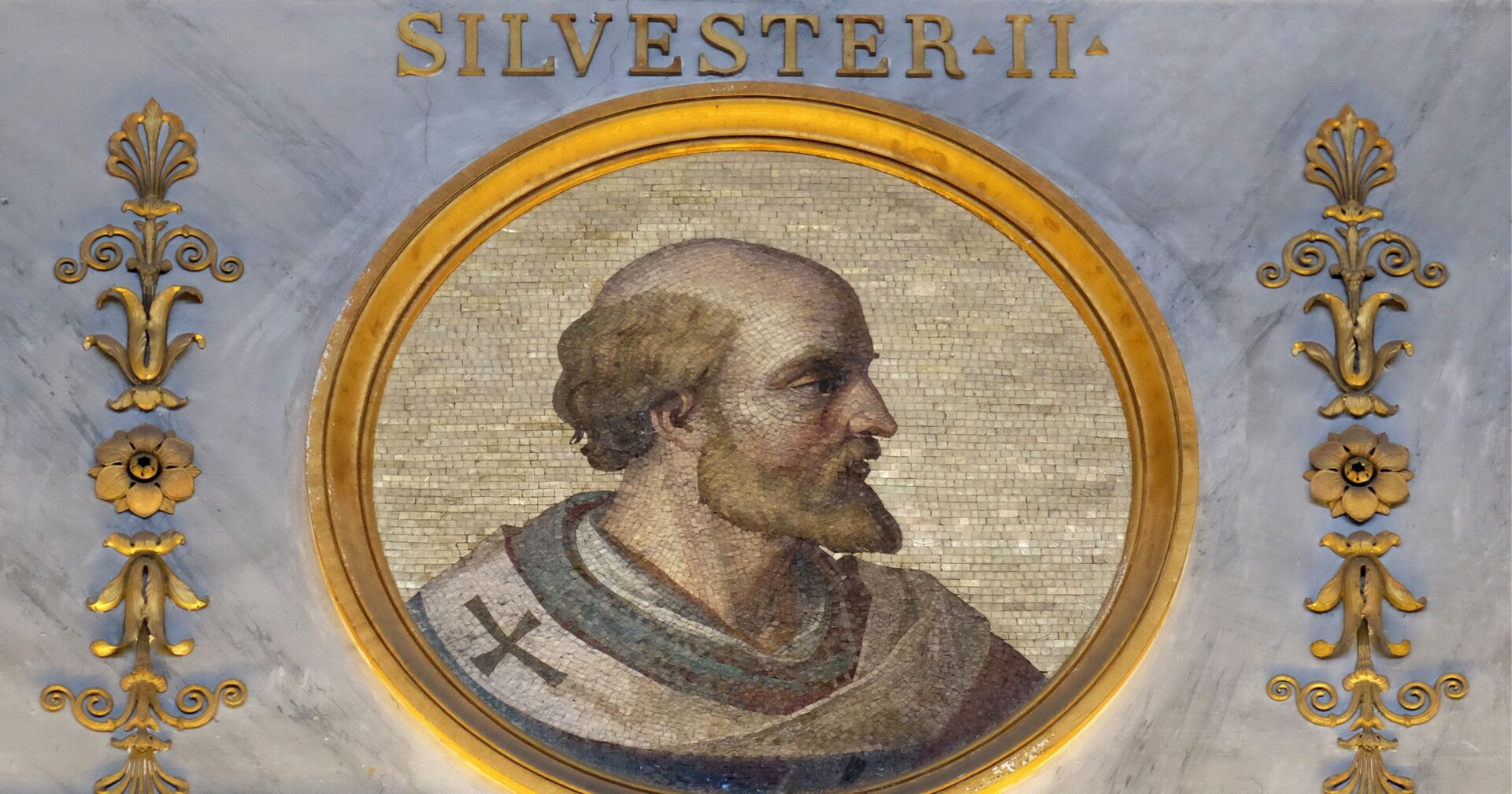The clock reveals to us the passage of time, but telling time wasn’t always as easy as it is today: from sundials to the hourglass, no method was very accurate until the first mechanical clock – a medieval Catholic invention by Pope Sylvester II.
Pope Sylvester II was originally known as Gerbert of Aurillac, born 946 A.D. in Auvergne, France. Born to a humble family, he was a shepherd boy who would use his night watch of the flocks to study astronomy. His studies attracted the attention of a local priest, who directed him to towards formal education.
In 963 A.D., Gerbert first went to the monastery of Saint Gerald of Aurillac for his education. In 967 A.D his teachers had realized his intellectual promise and sent him to the monastery of Santa Maria de Ripoll, an intellectual center in northern Spain.
As Spain bordered the nearby Moorish caliphate, his work at the abbey focused on the translation of Arabic texts into Latin. He was taught by the greatest of Catholic and Arab scientists and scholars, becoming prolific in mathematics, the abacus, astronomy, and philosophy.
After his education, Gerbert’s intellectual pursuit would lead him to visit significant monasteries across France, the principal seats of learning in the country at the time. While in Rheims, he first began to devise his plans for the mechanical clock.
In 996 A.D., Gerbert invented the first weight-driven mechanical pendulum clock at the University of Magdeburg in Germany. The clock’s mechanism would ring bells at regular intervals throughout the day to call his fellow monks to prayer.
To some, Gerbert’s vast intellectual prowess and mechanical skills used to invent the clock were a sure sign he had struck a deal with the devil. Skeptics and his enemies came up with dubious legends explaining his achievements.
According to these slanderous legends, Gerbert stole a book of spells from an Islamic wizard while in Spain and was accused of learning sorcery. He was also said to have built a “robotic” bronze head that would answer questions with a yes or no. Other legends say he fell in love with a female demon named Meridiana who helped him ascend to papacy, while another says he won the papacy playing dice with the Devil.
Pope Sylvester II’s invention became the basis for the concept of the mechanical clock. For 400 years, the mechanical clock was improved upon by the Church until it saw secular adoption in the 15th century.
Editorial credit: Zvonimir Atletic / Shutterstock.com


















I’d need to see some more documentation on that. Everything I’ve ever seen indicates that Galileo is responsible for the idea of the pendulum clock.
Billy, I need more information about this clock. That’s no devil, it’s a standing deer. ~2600BCE, The Queen of Sumer (city of Ur) ordered a couple of them in gold, think they got so fond of humans as to want to stand like humans do. Here’s one, https://www.britishmuseum.org/collection/object/W_1929-1017-1
If a person was called upon over a thousand years ago by syvester2 to be the number 9 carrier to for fill a prophecy what would that prophecy be